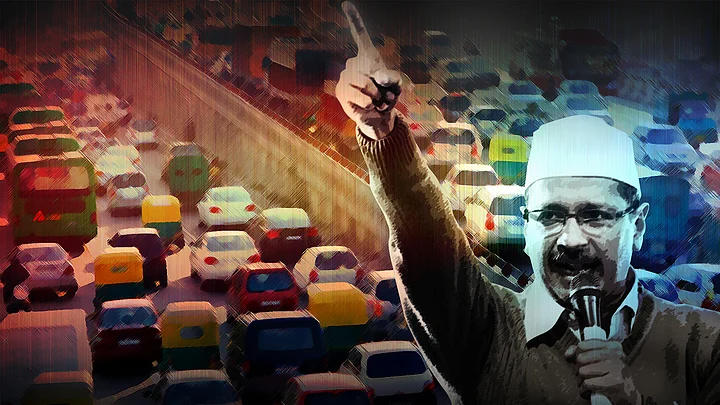The Chief Minister of Delhi has announced an odd and even number formula to regulate vehicles in the city, in an attempt to improve the capital’s air quality. This means if day one is for vehicles with an odd license number, then day two would be for even numbered vehicles. The underlying assumption is that it will reduce number of vehicles moving on the street, as well as bring down air pollution levels, a model being tested in the Colombian city of Bogota.
Well it looks like Delhi has come up with an idea, even though a borrowed one, to solve its air problems. But if banning cars would have helped in combating air pollution effectively and rationally, then probably every other city on this planet would have done so.
Is it a Rational Solution?
Are cars becoming soft targets to make excuses for our actions in battling air pollution? Perhaps the answer is yes. Cars manufactured before the millennium, responsible for ruining the ambient air, were not produced in sync with climate sciences. Modern technology-driven cars, backed by innovation in fuel systems, producing less emission have emerged. But their numbers have also gone up. During the same period, levels of air pollution in Delhi too have gone up.
Thus, it’s obvious to correlate air pollution with increasing number of cars on the street. But Delhi seems to be forgetting that the air it breathes also gets polluted by other activities such as coal burning, garbage burning, dust particles from construction activities, etc.
Taking a Cue From Other Countries
Blanket bans are never logical. The Delhi government could have explored other options such as access to clean fuel without adulteration, congestion cess, decentralised mobility options, work-from-home options, car pools, and incentivising discouragement of unchecked automobile usage by citizens.
This would have made for a more inclusive solution, helping a populist government retain their democratic demeanour. Geneva, which is smaller than Delhi in size and population, has better options for commuters and tourists than just cars. Once you land, there is a Public Transport ATM located at the exit gate of the airport which provides free public transport system access to passengers. A person can board the destination bus without paying anything for about an hour or so of travel, including changing of bus routes. Most of the buses are connected with hotels and neighbourhoods, within stipulated time periods.
Similarly during your stay, the hotel issues a pass that allows a visitor to commute free during her/his stay, and the same pass takes you back to the airport.
In Seoul, luxury bus services operate between multiple hotels, around the city, and bring a passenger from the airport to their respective destination by charging a fee. Many passengers avail such services to avoid commuting by cars. Imagine if such a system could have been implemented in Delhi then thousands of cars would get off the streets.
Delhi’s Car-centric Approach
But who will challenge the growing taxi market in India’s capital city? On the contrary, nothing has been done so far to discourage this car-centric approach. Has anything been done to incentivise officials, both in the private and public sectors, to discourage single occupancy car use, or promoting use of public transport? The answers, I am afraid, is no.
Let’s look at it in a different way – along with the introduction of the odd-even plan, why not introduce a culture of work-away-from-workspace? A person then won’t require a car at all to commute, resulting in reduced emission levels, decongestion, less parking problems. Sadly, none of these options were taken into consideration before coming up with the odd-even plan.
Bogota Model Won’t Work in Delhi
Delhi’s problems can neither be solved with the Bogota model of banning, nor with the Beijing formula of shutting down everything to reduce pollution levels. Delhi needs to find its own solution – investing in better and efficient public transport systems with better connectivity is one major step. Bus facilities for passengers, connecting airports, railway stations, and other key locations are of utmost importance.
Another way of discouraging cars lies in incentivising the use of public transport, in the form of reimbursement of public transport bills. Otherwise the jugad culture will encourage procurement of new cars to counter the odd-even plan.
On the flip side, the new plan can also give rise to a taxi-dependent culture which will solve individual problems but would land up creating more trouble for the city.
(Dr Piyush Ranjan Rout is an Urban Planner cum Urban Management Practitioner for emerging economies. The views expressed are of the author only.)
(At The Quint, we question everything. Play an active role in shaping our journalism by becoming a member today.)
